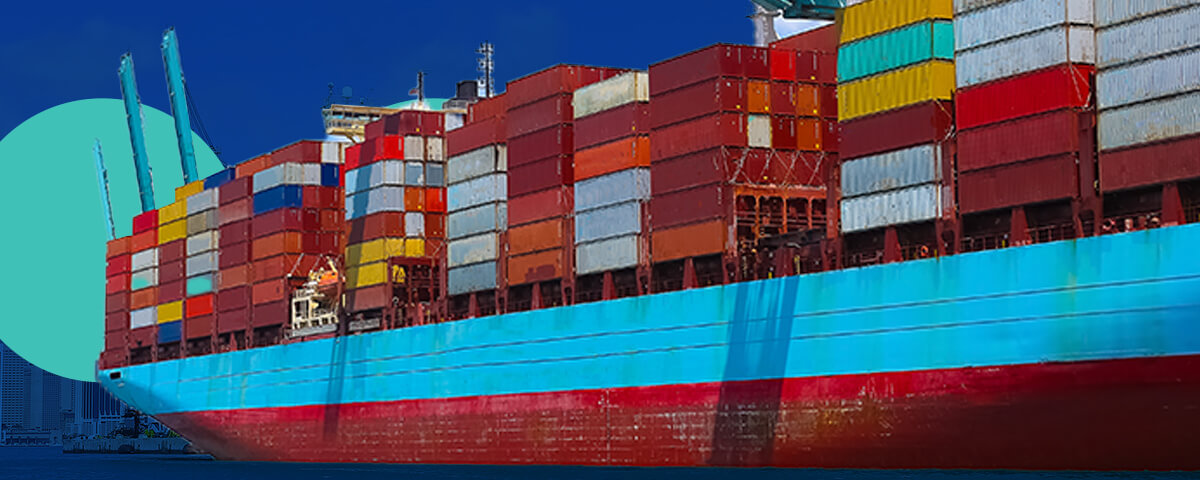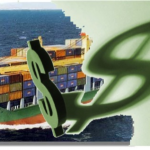Freight Rates Haven’t Bottomed Out Yet
What goes up must come down. Despite many experts saying we would never see pre-pandemic-level freight rates again when the cost of ocean shipping skyrocketed out of control during and after the pandemic, those rates did finally plummet back to earth. While freight rates are no longer falling as fast as they had been over the last year, they’re still dropping.
Overcapacity is a big factor in the falling freight rates, so the incredible amount of capacity being added to the industry right now through new ships should continue to put downward pressure on freight rates for some time. Add to that economic uncertainty, and you have low demand to go with high capacity, helping freight rates to bottom out.
But exactly where that bottom is, no one knows. What we do know is freight rates are still sinking.
Indices Show Freight Rates Still Falling

Thanks to a Freight Waves article by Greg Miller, various freight rate indices are compiled in one place to make it easy for American shippers to see what’s happening with freight rates at this moment. For those who like data, you’ll love this from Miller’s article:
Different spot indexes post different rate assessments, but the directional trends are generally the same.
The Freightos Baltic Daily Index (FBX) assessed spot rates in the China-West Coast lane at $1,040 per forty-foot equivalent unit on Friday, down 94% year on year (y/y) and down 30% versus March 2019, pre-COVID.
FBX put Friday’s China-East Coast rate at $2,286 per FEU (minus-87% y/y, minus-17% versus pre-COVID).
Meanwhile, the trans-Atlantic market continues to far outperform the trans-Pacific. FBX’s westbound Europe-East Coast assessment was at $4,418 per FEU on Friday, down only 36% y/y and up 89% versus March 2019.
The year-to-date (YTD) changes show the pace of rate declines in the trans-Pacific has decelerated versus last year, but rates are still headed lower.
The FBX China-West Coast index rate is down 25% YTD, China-East Coast 21% and Europe-East Coast 20%.
The Drewry World Container Index (WCI) assessed Shanghai-Los Angeles spot rates for the week ending Thursday at $1,948 per FEU.
That’s down 2% YTD, 82% y/y and — in contrast to what the FBX says — up 23% since March 2019, pre-pandemic.
The WCI assessed Shanghai-New York spot rates at $2,772 per FEU, down 29% YTD, 79% y/y and 1% versus March 2019.
…
The Shanghai Containerized Freight Index, which gauges spot levels on all mainline routes from that Chinese port, fell to 931 points in the week ending Friday. That’s down 12% YTD and 66% y/y but still up 16% from March 2019.
Xeneta’s short-term index, the XSI-C, was at $1,259 per FEU for the Far East-U.S. West Coast lane as of Wednesday, down 4% week on week and 10% month on month.
The Platts index for North Asia-North America was unchanged in the week ending Friday. Sources told Platts “volumes are too weak to make a dent in rates” and “margins are terrible.”
For those of you who don’t like looking at data and jumped ahead to here, the indices support the opening of this post. After big freight rate falls in 2022, we’re seeing slower declines now. But we’re still seeing declines.
There is one data point I left out in the above because how strong freight rates are on the shipping lane it covers seemed worth separating out. Miller reports:
In the still-strong Rotterdam, Netherlands-to-New York market, the WCI assessed spot rates at $5,573 per FEU, down 20% YTD and 14% y/y, but up 179% versus March 2019.
Like the other trade lanes to the U.S., freight rates are moving in a downward direction for the Rotterdam, Netherlands-to-New York market. Unlike the rest, freight rates are still very high there compared to pre-pandemic levels (I suppose that gives plenty of room to keep falling). Still, the general story remains the same. Freight rates continue to get lower.
Dangers of Freight Rates Falling Too Low
Overall, news stories of low freight rates are positive for shippers, who obviously need reasonable rates that help their businesses make profits. However, rock-bottom rates can become problematic for shippers.
When rates get too low for too long, carrier reliability often goes down. Blanked (cancelled) sailings are just the beginning of issues that can make it hard for shippers to count on exactly when their cargo will arrive. Not only does the risk of cargo being rolled to later sailings increase, but carriers may utilize transhipment more to combine cargo from various ships and save costs, as was a planned strategy carriers had for dealing with the increased cost of the IMO’s clean fuel mandate.
Cargo delays are often very costly for shippers. Blanked sailings are bad news on that front. Transhipments are usually worse. On top of delays, cargo can travel through extra ports, extra countries, wait on docks for long periods before being loaded to the next ship… Transhipment adds risk, and often shippers have no idea where their cargo is.
Then there’s the risk of carrier competition shrinking in the industry, which I’ve talked about many times in Universal Cargo’s blog. It makes rooting for rock-bottom freight rates look short-sighted, as the risk of buyouts, mergers, even bankruptcy make freight rates likely to be pushed higher in the lIdeally, shippers should be looking for stability in the ocean shipping market when it comes to freight rates. Healthy rates that are neither too high nor too low would increase service reliability and allow shippers to better financially prepare for the future. Unfortunately, stability has never been what the international shipping industry has been known for.
Freight rates tend to swing up and down, sometimes wildly. Unfortunately, service suffers and delays increase when there are extremes on either end of the spectrum, with incredibly high freight rates or rock-bottom ones. We’re on the way to rock-bottom ones. At least, shippers can take advantage of the lower costs while they’re here.




